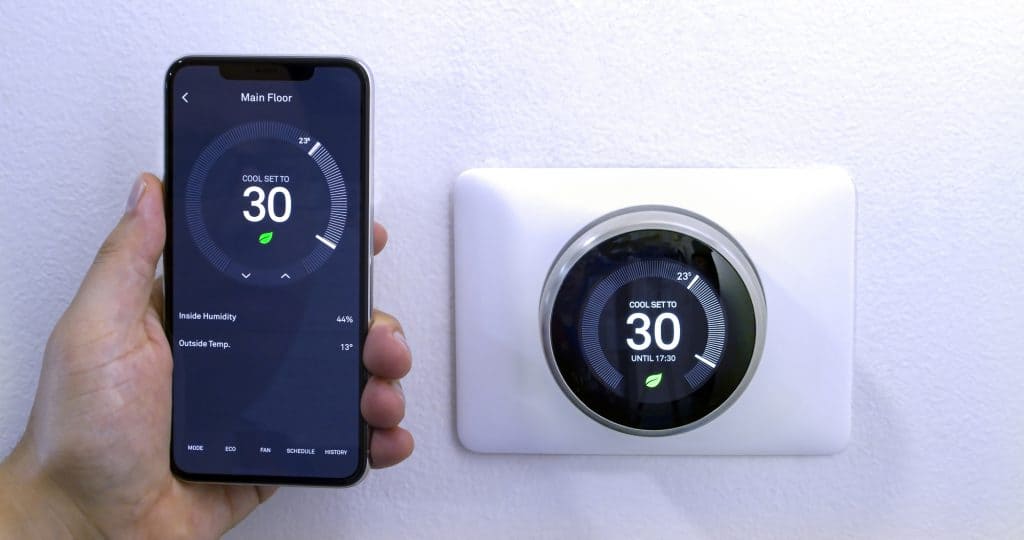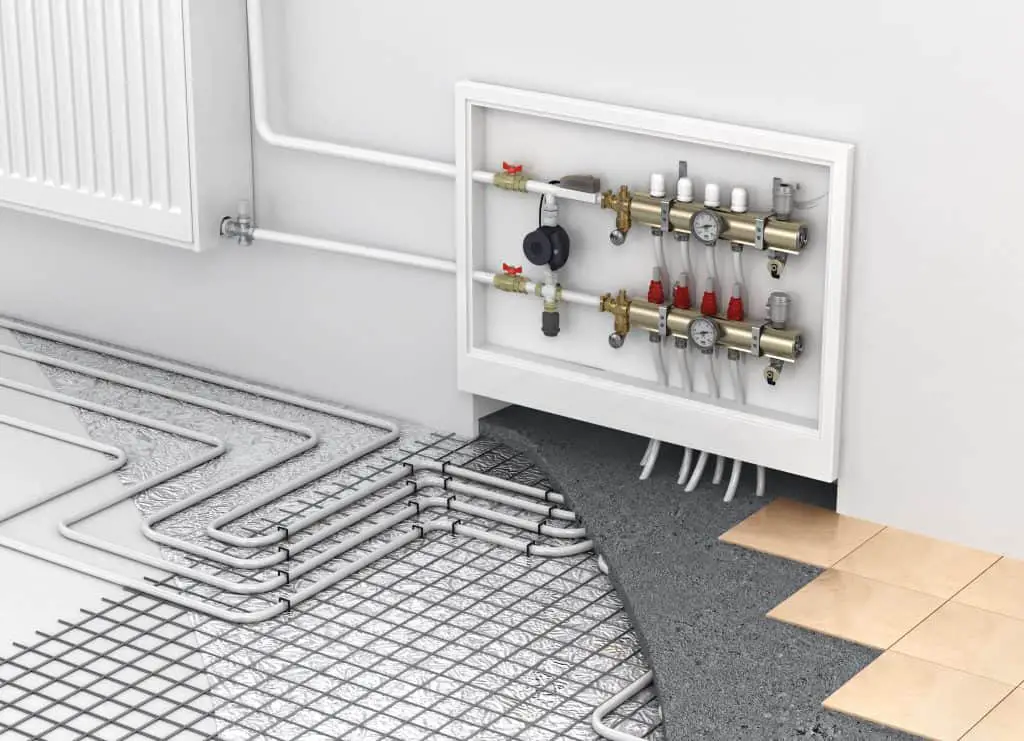Working out a heating plan for your home is essential to stay cozy in colder months. One of the best ways to achieve this is by creating an underfloor heating plan. Nothing feels better than letting your feet touch a warm floor on a chilly night.
While there are several ways you can go about this, a Nest thermostat is one of the easier routes.
Picture this, you’re out and want to get back to a heated house. You can schedule your underfloor heating plan with your smart thermostat. Appealing, isn’t it?
This all seems wonderful, but to support underfloor heating, a Nest thermostat needs to be compatible with the heating source.
So, does the Nest thermostat support underfloor heating? Here’s everything you need to know.
All About Nest Thermostats

There are a bunch of Nest thermostat models provided by Google. The first one was introduced in 2011. Since then, there have been the 2nd, 3rd, and 4th generations of Nest thermostats.
The main selling point of this smart thermostat is its energy-saving features. When you’re using one and find a green leaf icon, it means that you’re saving both energy and money.
Nest thermostats study your usage and make the call themselves, adjusting the temperature without your interference. They can identify the outdoor weather in your region and accordingly adjust the heating or cooling settings (HVAC).
This could work well because the thermostat will let you know when you’re overheating the room. After that, you’ll be able to regulate it to a more reasonable temperature schedule.
The best part about Nest thermostats is that you can control them using your smartphone through the Google Home app or even Amazon’s Alexa.
What Type of Underfloor Heating Plan Can Your Nest Thermostat Support?
There are a couple of underfloor heating plans that might be compatible with your Nest thermostat. Your best bet would be to work with a hydronic or water underfloor heating system. Alternatively, an electric heating plan might also work in some instances.
Let’s take a closer look at each plan.
Hydronic Underfloor Heating System

If you’re wondering why a heating system would run with water, the answer is that water can hold approximately a thousand times more heat than air with similar volumes.
Plus, you wouldn’t be hearing the air blowing noises around your house. Hydronic underfloor heat comes from a network of small pipes that take up less space than most other heating plans.
The heat source comes from a heat pump or boiler powered by gas, wood, or diesel. In the hydronic underfloor heating system, the manifolds are responsible for dispensing warmth to all the small pipes.
Pairing Hydronic Underfloor Heating with Your Nest Thermostat
Chances are, your house might be equipped with more than one heating plan. The hydronic underfloor plan is one part of it. That, in turn, can make it compatible with your Nest thermostat.
It’s better for your Nest thermostat to only control one heating plan (underfloor). We assume you wouldn’t want the temperature of your underfloor to be the same as the rest of your house.
There is a range of hydronic underfloor heating options. Let’s take a look at the boiler systems. The boiler gives off hot water throughout the pipes to spread the underfloor warmth. There could be combi, biomass, and heat-only boilers.
In terms of which Nest thermostat would work well with them, we’d say the Nest thermostat E, 2nd, and 3rd gen Nest thermostat ranges.
That being so, if you’re using an older hydronic heating system like domestic hot water tanks, then it might only be compatible with the 3rd gen Nest Learning thermostat.
Electric Underfloor Heating Plan
Instead of pipes, imagine a tiny network of electric wires, and that’s what an electric underfloor looks like.
The wires steadily heat up to warm your floor’s surface. You can find the wires in the form of foil or a mat. There’s also a membrane and loose wire system available in the market, which is easier to install.
The main advantage of electric underfloor heating is how quickly it works compared to hydronic systems.
Seeing that the wires are much thinner than pipes, they’ll take up much less space and are closer to the floorboards.
That being said, there are drawbacks to using electric underfloor planning. If one of the wires malfunctions, it’ll be like looking for a needle in a haystack because of how big the surface area is.
Meanwhile, a hydronic underfloor heater would be easier to fix since you can just locate the source of the leak.
Pairing Electric Underfloor Heating with Your Nest Thermostat
There’s a chance your Nest thermostat can work with an electric underfloor heating system. Some of the electric systems that would work for Nest thermostat E, 2nd, and 3rd gen Nest thermostats would be low-current ones with either high-volt or volt-free electric grids.
If you have an electric heating plan controlled by the pilot wire, you can optimize it with all three Nest thermostat ranges as well. Nevertheless, they would need a Nest Pro installation.
Collective and district underfloor heating with accessible individual electric valves is also compatible with the ranges mentioned.
If you want to double-check if the Nest thermostat can support your electric or hydronic underfloor heating system, it’s best to check Google’s compatibility checker here.
Issues with Nest thermostats and Underfloor Heating
Before connecting your Nest thermostat with your underfloor heating, you should consider some issues you might encounter on the way.
If you have an older underfloor heating system, you might have more problems with compatibility.
Another main issue to look at is that since your underfloor heating plan is only one part of your whole home heating system, you’ll need a separate Nest thermostat.
The good news is that some Nest thermostats, specifically in the U.S, can offer multi heat sources.
Reasons Why Your Nest Thermostat Isn’t Compatible with an Underfloor Heating System
There are mainly two reasons behind this lack of support. Firstly, it could be a high current system.
This takes us back to the electric underfloor heating system. Some of them have too high of a voltage to work with Nest thermostats.
Nest thermostats mostly use low current systems because they’re far more common. An adequate voltage would be 3A at a time. Some electric underfloor heating plans use 16A or higher.
Another cause would be that the underfloor heating plan is a proprietary system. That means that you’ll need to get a thermostat from the same manufacturer of the underfloor heating system.
Can Your Nest Thermostat’s True Radiant Feature Help?
Before we get into the True Radiant feature, you should first ask, “how long does my underfloor heating take to reach the set temperature?”
Once you got that all figured out, that’s where the True Radiant feature comes in handy. Let’s say it takes your system around a couple of hours or so to properly heat your floor.
The feature, usually turned on by default, will memorize that. It’ll take into account how much time it takes before your floor reaches the ideal temperature.
While it usually takes an hour or two for your underfloor to heat up, the feature can give you more time, even four hours. That would, of course, warm your floor before the time wanted.
FAQs
Do you need separate Nest thermostats for each floor?
Yes, you will need to purchase a Nest thermostat per floor for best energy saving performance.
How can you use a Nest thermostat even though the voltage is too high?
You can use a step-down transformer to adjust the voltage accordingly.
How do you use a Nest thermostat with a proprietary underfloor heating system?
If the proprietary system is compatible with a standard thermostat, you can ask for help from a Nest Pro Installer nearby to connect your Nest thermostat.
To Conclude
Does Nest thermostat support underfloor heating? The answer is yes, it can. There are a few systems that are compatible, like the hydronic and electronic ones.
Even if some systems aren’t, there’s usually a workaround to make them compatible with your Nest thermostat. We recommend contacting Nest pros to give you a hand in the installation process.
